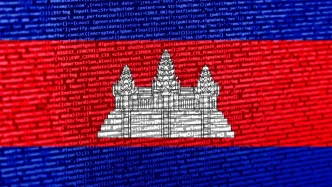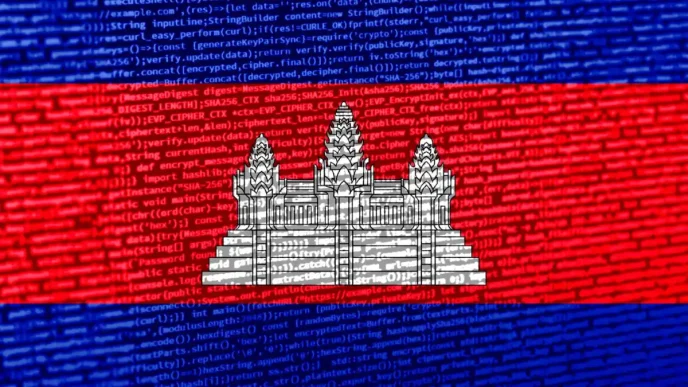Vietnam is preparing to commemorate a historic milestone—the 50th anniversary of the Liberation of the South and National Reunification—with a series of grand events that underscore both national pride and regional solidarity. High-ranking delegations from neighboring Laos and Cambodia will join Vietnamese leaders in Hanoi and Ho Chi Minh City for celebrations that include a massive parade, cultural displays, and symbolic gestures of unity. As the country reflects on its past, the events also offer a glimpse into its vision for the future, amid evolving geopolitical dynamics in Southeast Asia.
A Milestone of Unity and Resilience
On April 30, 2025, Vietnam will mark half a century since the fall of Saigon and the reunification of the country under a single banner. This anniversary holds profound significance for the Vietnamese people, symbolizing not only the end of decades of conflict but also the beginning of a journey toward rebuilding and reconciliation. The Liberation of the South, often referred to as Reunification Day, remains a cornerstone of national identity, celebrated annually with fervor across the country.
This year’s events are set to be among the most elaborate in recent memory. According to the Ministry of Foreign Affairs, the centerpiece will be a grand parade in Ho Chi Minh City, scheduled to begin at 6:30 a.m. on April 30. Approximately 13,000 participants, including soldiers of the People’s Army of Vietnam, will take part in the meticulously choreographed display. The parade will showcase military precision, historical reenactments, and tributes to the sacrifices made during the war years. Notably, troops from Laos and Cambodia will also join the procession, a gesture that highlights the deep ties between the three nations forged through shared history and mutual support.
Preparations have been underway for weeks, with Vietnamese forces conducting two full-scale rehearsals alongside their Lao and Cambodian counterparts. Images released by state media show soldiers in crisp uniforms marching in unison, a testament to the discipline and coordination behind the event. For many Vietnamese, the parade is more than a spectacle—it is a reminder of the resilience that defines their nation.
Regional Allies Join the Celebration
The presence of high-ranking delegations from Laos and Cambodia adds a layer of diplomatic significance to the commemorations. The Lao delegation, led by General Secretary of the Lao People’s Revolutionary Party and President Thongloun Sisoulith, arrived in Vietnam on April 28 for a three-day visit. Their itinerary includes attending key events in Hanoi and engaging in discussions with Vietnamese leaders, reinforcing the longstanding friendship between the two countries.
Similarly, the Cambodian delegation, headed by Cambodian People’s Party President and Senate President Hun Sen, joined the celebrations on April 29. Hun Sen, a prominent figure in Cambodian politics with a history of close ties to Vietnam, is expected to participate in the main ceremony in Ho Chi Minh City. His presence underscores the shared history of resistance and solidarity among the three nations, particularly during the tumultuous years of the 20th century.
These visits are not merely ceremonial. They reflect a broader commitment to regional cooperation within the framework of the Association of Southeast Asian Nations (ASEAN). Vietnam, Laos, and Cambodia have often aligned on issues of mutual interest, from economic development to security concerns. Analysts suggest that the anniversary events provide an opportunity for leaders to discuss pressing matters, such as cross-border trade and infrastructure projects, though no official agenda for bilateral talks has been confirmed.
Historical Context and Modern Implications
The 50th anniversary of reunification is an occasion to revisit Vietnam’s complex history. The Liberation of the South in 1975 marked the culmination of a protracted struggle against colonial powers and internal division, culminating in the Vietnam War—a conflict that drew global attention and left deep scars on the nation. Reunification under the leadership of the Communist Party of Vietnam (CPV) brought an end to hostilities but also ushered in a challenging period of reconstruction amid international isolation.
Over the past five decades, Vietnam has transformed from a war-torn country into one of Southeast Asia’s most dynamic economies. Its journey has been marked by significant milestones, including the Doi Moi economic reforms of the late 1980s, which opened the door to foreign investment and market-oriented policies. Today, Vietnam is a key player in global supply chains, with a growing middle class and ambitious plans for sustainable development.
Yet, the anniversary also prompts reflection on unresolved issues. Economic disparities between urban and rural areas persist, and questions about political reform and human rights remain points of contention both domestically and internationally. While the CPV maintains a firm grip on power, there is a growing dialogue among younger generations about the balance between tradition and modernization. The government’s handling of these issues in the coming years could shape Vietnam’s trajectory as it approaches the centennial of its reunification.
A Celebration of Culture and Community
Beyond the military parade and diplomatic engagements, the anniversary celebrations will feature a wide range of cultural activities designed to engage the public. In Hanoi, exhibitions showcasing historical artifacts and photographs will offer a window into the past, while traditional performances and concerts are planned in cities across the country. In Ho Chi Minh City, community events will bring together veterans, students, and families to honor the sacrifices of those who fought for reunification.
One of the highlights will be a reenactment of key moments from the 1975 campaign, staged as part of the parade. Organizers have emphasized that the event is intended to educate younger generations about their history, fostering a sense of national pride. For older Vietnamese, particularly those who lived through the war, the anniversary is a deeply personal moment to reflect on loss, survival, and hope.
The involvement of Laos and Cambodia in these cultural displays is also significant. Joint performances and exhibitions will celebrate the shared heritage of the Indochinese region, emphasizing themes of peace and friendship. Such initiatives are seen as a way to strengthen people-to-people ties, complementing the formal diplomatic interactions at the state level.
Looking Ahead: Vietnam’s Role in the Region
As Vietnam celebrates this historic milestone, questions linger about its future role in Southeast Asia and beyond. The country has increasingly positioned itself as a mediator in regional disputes, advocating for dialogue and cooperation within ASEAN. Its relationship with major powers, including the United States and China, remains a delicate balancing act, shaped by both historical tensions and economic imperatives.
The 50th anniversary of reunification offers a moment to reflect on these dynamics. For Vietnamese leaders, the celebrations are an opportunity to project an image of unity and strength, both domestically and internationally. The presence of Lao and Cambodian delegations reinforces the narrative of regional solidarity, a counterpoint to the geopolitical rivalries that often dominate headlines in the Asia-Pacific.
Public sentiment, as gauged through local media and social platforms, appears overwhelmingly positive about the commemorations. Many Vietnamese see the events as a chance to honor their history while embracing a forward-looking vision. In Ho Chi Minh City, where the parade will take center stage, residents and visitors alike are preparing for a day of celebration that bridges the past and the future.
As the final rehearsals conclude and the stage is set for April 30, Vietnam stands at a crossroads. The 50th anniversary of reunification is not just a commemoration of history but a statement of intent—a reminder that the nation’s resilience and unity will continue to define its path in an ever-changing world.














